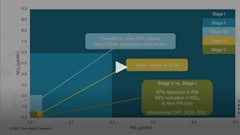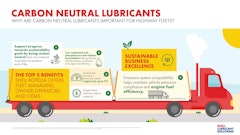The global lubricants industry is facing a key challenge in adapting to a future where the mass deployment of electric and hybrid vehicles will shift volume and performance demands for key products, according to the latest research from Smithers Apex.
The world is looking for attainable solutions to the problems of climate change and pollution, and is looking at numerous options. A number of these are focused on road vehicle transportation, which is a leading cause of climate-related issues. A key strategy for the global community to mitigate the risk of greenhouse gas generation is to develop and expand the use of electric vehicles (EVs) as an alternative to the traditionally powered internal combustion engine (ICE) powered vehicles.
For the lubricants industry, this is a massive shift that will have far-reaching impacts across their existing products – used widely in automotive applications – as well as new product developments, and indeed their entire business models.
Learn more about the shift for new lubrication needs, and its impact for the heavy-duty equipment industry in the article "Evolving Vehicle Designs Bring New Lubrication Requirements."
According to a new report from Smithers Apex, "The Impact of Electric Vehicles on Lubricants to 2029," there will be 470 million electric vehicles by 2029. A key driver of the forecast is that improvements in battery technology manufacturing scale and government support for green transportation in key end use markets, such as China, will encourage wider acceptance of EVs. Also climate change targets have focused many nations on the volume of vehicles required to meet the climate change Paris Agreement targets.
Increased growth over the next 10 years of EVs will have an impact on the changes in required lubricant volumes, including:
- Engine oil – A decline in volumes of engine oil, as EVs have fewer under the hood moving parts. Though global consumption will increase in line with new vehicle ownership until the mid-2020s, a subsequent increase in EV numbers will cause shrinkage in engine oil market.
- Brake fluids – This market will remain the same with the type of brake fluid incorporated in both ICEs and EVs is likely to remain at similar volumes.
- Coolants - Will see growth as EVs will require additional sophisticated heat transfer fluids to maintain battery temperatures within a narrow range, while ICE coolants are used to simply cool the engine.
- Transmission oils –All types of vehicle – powered by an ICE, batteries, fuel cells or a hybrid configuration – will continue to require transmission oils. However, EVs have a less demanding environment and hence formulations may be simplified.
The impact on these key lubricant types is analyzed in depth in the new Smithers Apex report, drawing on an exclusive expert market survey and ranking of the key electric vehicle trends across 2019-2029. Their impact on the lubricants market and commercial opportunities are assessed critically, and quantified across all major geographic markets, with over 100 data tables and figures.
Smithers Apex’s new report analyzes the drivers of change, and forecasts where and to what extent the impacts of the EV megatrend will be felt across different aspects of the lubricants industry and business.



















